译林英语必修3Unit2 Language Project 课件(共23张PPT)
文档属性
| 名称 | 译林英语必修3Unit2 Language Project 课件(共23张PPT) | 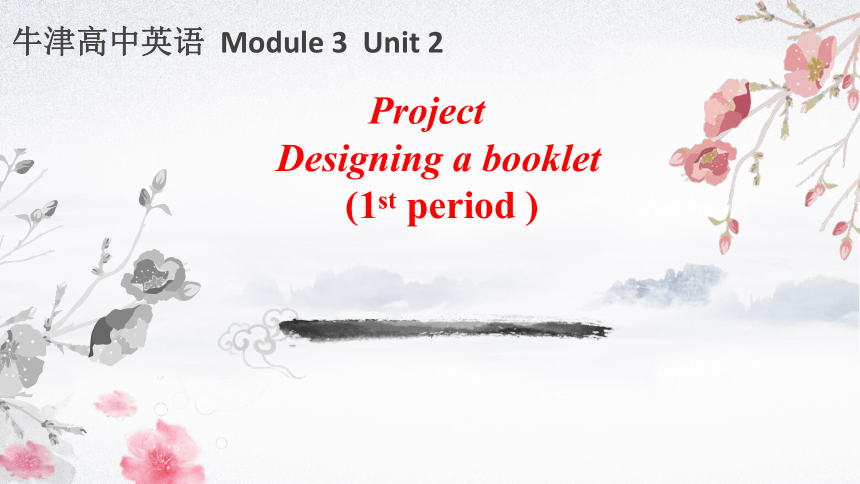 | |
| 格式 | zip | ||
| 文件大小 | 8.3MB | ||
| 资源类型 | 教案 | ||
| 版本资源 | 牛津译林版 | ||
| 科目 | 英语 | ||
| 更新时间 | 2020-03-30 21:12:12 | ||
图片预览


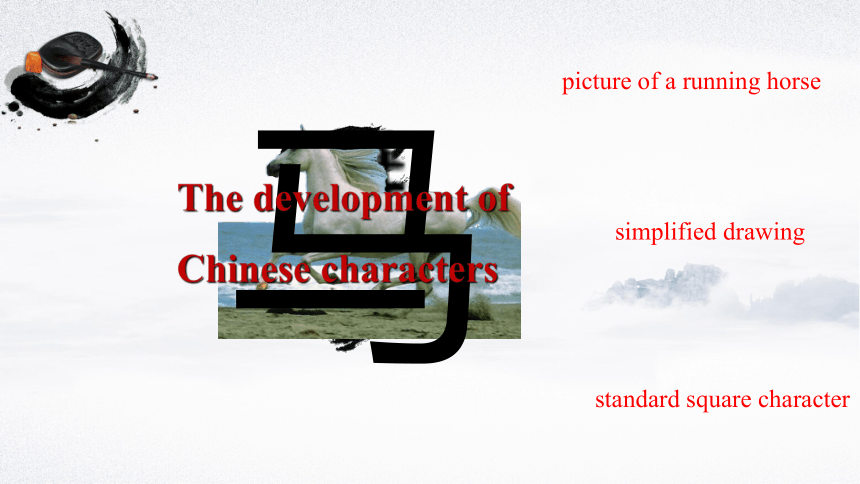
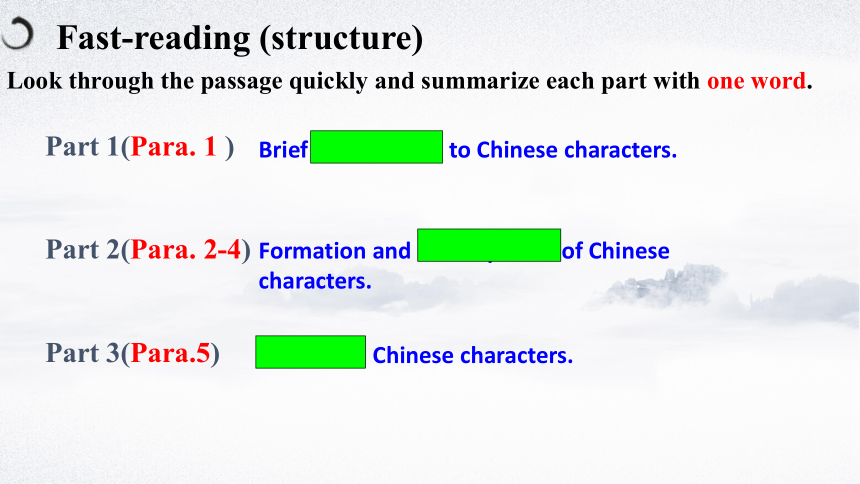
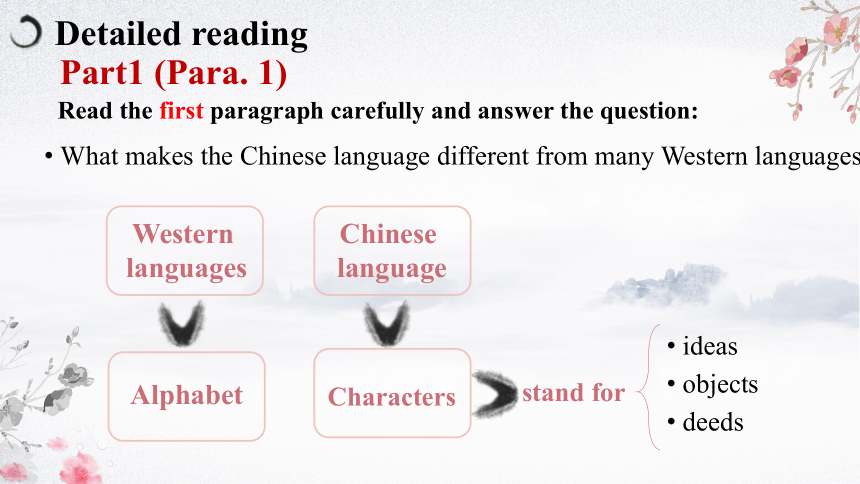
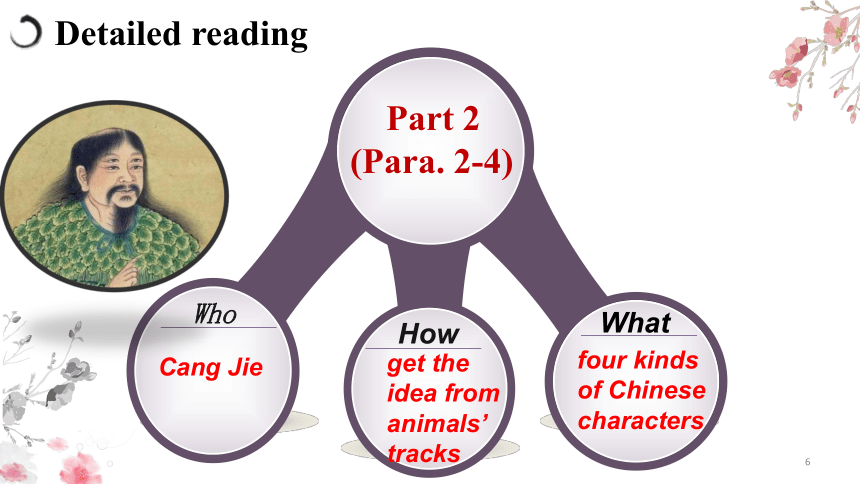
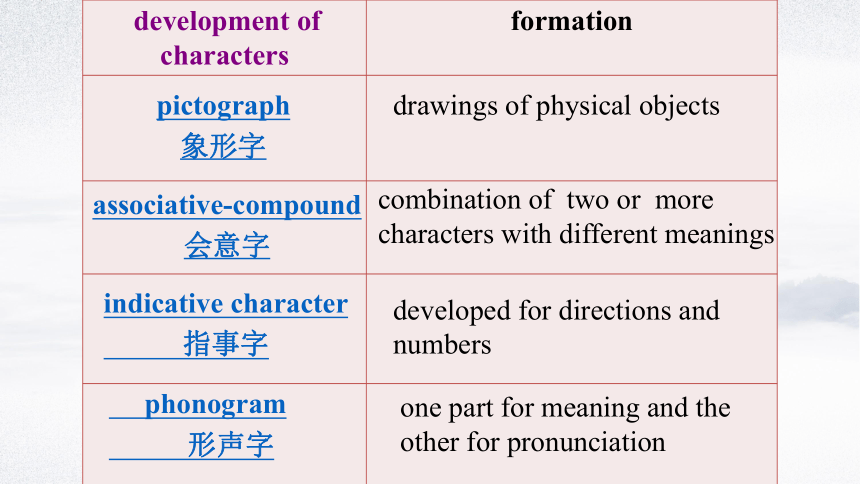
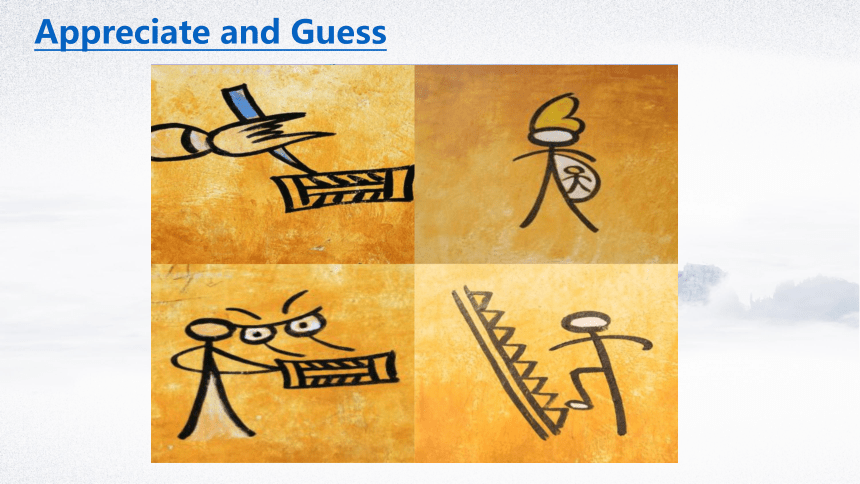

文档简介
(共23张PPT)
牛津高中英语 Module 3 Unit 2
Project
Designing a booklet
(1st period )
What is the song about?
Chinese characters.
How do you feel after watching the video?
There are many complex Chinese characters.
Question
the appearance of a dragon walking
马
The development of
Chinese characters
picture of a running horse
simplified drawing
standard square character
Part 1(Para. 1 )
Part 2(Para. 2-4)
Part 3(Para.5)
Brief introduction to Chinese characters.
Formation and development of Chinese characters.
Simplified Chinese characters.
Fast-reading (structure)
Look through the passage quickly and summarize each part with one word.
What makes the Chinese language different from many Western languages?
Western
languages
Alphabet
Chinese
language
Characters
stand for
ideas
objects
deeds
Part1 (Para. 1)
Detailed reading
Read the first paragraph carefully and answer the question:
*
Part 2
(Para. 2-4)
Who
Cang Jie
How
get the idea from animals’ tracks
What
four kinds of Chinese characters
Detailed reading
drawings of physical objects
combination of two or more characters with different meanings
pictograph
象形字
associative-compound
会意字
indicative character
指事字
phonogram
形声字
developed for directions and numbers
one part for meaning and the other for pronunciation
development of characters formation
9土
Please move the boxes around to make a new character.
12木
11木
10木
5人
6木
7人
8人
1子
4田
3力
2女
Indicative character
Try to explain ‘花’ in English
The upper part indicates the meaning ‘______’ and the lower part suggests the pronunciation ‘_______’.
Therefore, 花 means
‘________________________’.
plant
huā
the coloured part of a plant
Traditional
Chinese
characters
Simplified
Chinese
characters
_________ Chinese characters were introduced in the 1950s.
Detailed reading
Part 3 (Para. 5)
Simplified
Discussion
Should traditional Chinese characters return to schools?
Work in groups of four.
Discuss the topic with members for 5minutes.
Present your group’s idea to the class.
The story of Braille
What does Braille stand for?
a person’s
name
The system
for reading
and writing
used by the
blind
created
Why
How
What effects
Part 1
(para.1)
Part 2
(para.2)
Part 3
(para.3-4)
Part 4
(para.5)
Introduction
Why did he create the system?
(Para.2)
blind
not convenient for use
How did he create the system?
(Para.3-4)
a soldier
a system with patterns of six raised dots representing each letter
What effects does the system have? (Para.5)
It is the most common system used by the blind.
Every language has its own version based on it.
Consolidation
The Chinese language, ________ was invented by a man ________(name) Cang Jie, has ____ long history. It ______(main) experienced four kinds of development. It was not until the 1950s that __________(simplify) Chinese characters were introduced by the Chinese government.
When _______(talk) about reading, we think of using our eyes to see letters written in ink on paper. Though the blind cannot see, they can read too. It was Louis Braille _______ invented “Braille”, resulting _____ his loss of eyesight at the age of three. The invention of “Braille” made it convenient for the blind _________
(read) and write. Today, nearly every language, Chinese ________
(include), has its own version of Braille for its people to use.
which
named
a
mainly
simplified
talking
who/that
from
to read
included
Homework
Try to explain your name next period;
Find more applications of Braille in our daily life.
Thank you
牛津高中英语 Module 3 Unit 2
Project
Designing a booklet
(1st period )
What is the song about?
Chinese characters.
How do you feel after watching the video?
There are many complex Chinese characters.
Question
the appearance of a dragon walking
马
The development of
Chinese characters
picture of a running horse
simplified drawing
standard square character
Part 1(Para. 1 )
Part 2(Para. 2-4)
Part 3(Para.5)
Brief introduction to Chinese characters.
Formation and development of Chinese characters.
Simplified Chinese characters.
Fast-reading (structure)
Look through the passage quickly and summarize each part with one word.
What makes the Chinese language different from many Western languages?
Western
languages
Alphabet
Chinese
language
Characters
stand for
ideas
objects
deeds
Part1 (Para. 1)
Detailed reading
Read the first paragraph carefully and answer the question:
*
Part 2
(Para. 2-4)
Who
Cang Jie
How
get the idea from animals’ tracks
What
four kinds of Chinese characters
Detailed reading
drawings of physical objects
combination of two or more characters with different meanings
pictograph
象形字
associative-compound
会意字
indicative character
指事字
phonogram
形声字
developed for directions and numbers
one part for meaning and the other for pronunciation
development of characters formation
9土
Please move the boxes around to make a new character.
12木
11木
10木
5人
6木
7人
8人
1子
4田
3力
2女
Indicative character
Try to explain ‘花’ in English
The upper part indicates the meaning ‘______’ and the lower part suggests the pronunciation ‘_______’.
Therefore, 花 means
‘________________________’.
plant
huā
the coloured part of a plant
Traditional
Chinese
characters
Simplified
Chinese
characters
_________ Chinese characters were introduced in the 1950s.
Detailed reading
Part 3 (Para. 5)
Simplified
Discussion
Should traditional Chinese characters return to schools?
Work in groups of four.
Discuss the topic with members for 5minutes.
Present your group’s idea to the class.
The story of Braille
What does Braille stand for?
a person’s
name
The system
for reading
and writing
used by the
blind
created
Why
How
What effects
Part 1
(para.1)
Part 2
(para.2)
Part 3
(para.3-4)
Part 4
(para.5)
Introduction
Why did he create the system?
(Para.2)
blind
not convenient for use
How did he create the system?
(Para.3-4)
a soldier
a system with patterns of six raised dots representing each letter
What effects does the system have? (Para.5)
It is the most common system used by the blind.
Every language has its own version based on it.
Consolidation
The Chinese language, ________ was invented by a man ________(name) Cang Jie, has ____ long history. It ______(main) experienced four kinds of development. It was not until the 1950s that __________(simplify) Chinese characters were introduced by the Chinese government.
When _______(talk) about reading, we think of using our eyes to see letters written in ink on paper. Though the blind cannot see, they can read too. It was Louis Braille _______ invented “Braille”, resulting _____ his loss of eyesight at the age of three. The invention of “Braille” made it convenient for the blind _________
(read) and write. Today, nearly every language, Chinese ________
(include), has its own version of Braille for its people to use.
which
named
a
mainly
simplified
talking
who/that
from
to read
included
Homework
Try to explain your name next period;
Find more applications of Braille in our daily life.
Thank you
